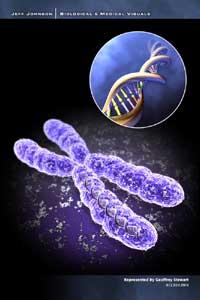Gene therapy increasingly has more strength
The University of Ulster team is using one of the body's most important genes to treat cancer and will begin clinical trials in 18 months. The technique is to inject into the tumor the nitric oxide gene that is produced to control blood pressure. This gene has been joined by a molecule that is activated by radiation, which allows the tumor to be destroyed without damaging healthy cells in the area.
One of the biggest problems in treating tumors is the lack of oxygen in cells most affected by their resistance to radiation therapy and chemotherapy. However, by introducing the nitric oxide gene into the tumor, oxygen reaches the cells. In addition, the activity of the gene lasts 48 hours, reducing the frequency of radiation treatment.

According to the researchers, this technique may be used to treat different types of cancer, but for the moment tests will begin with breast, prostate and lung cancers that exist abroad.
On the other hand, researcher Andy Choo of the Murdoch Children's Research Institute in Melbourne has presented a new method of introducing genes into cells. Until now, gene therapy used viruses to transport genes. But in viruses only two or three genes enter and to introduce large fragments of genes, such as muscular dystrophy or the mixture of anticancer genes, another transporter is needed.
Therefore, researchers have tried to make small versions of the natural way to collect genes, the chromosome. Artificial human chromosomes are made by the union of genes, but have great drawbacks. On the one hand, they are very large and complex and the union of genes is difficult. On the other hand, smaller chromosomes are often very unstable. It seems that the hook of the problem lies in the centrometer. The centrometer orders the location of protein fibers in the cell division and it is very difficult to control the portion of DNA (satellite) that organizes it.
However, Andy Choo finds a solution. Analyzing the genome of a five-year-old boy behind, he discovered that the end of chromosome 10 was broken in all cells. However, the formation of a new centromer allowed the end to remain in part of the genome. Taking this part, Choo has achieved an artificial chromosome 100 times lower than the human chromosome. It seems that this centromer does not have satellite DNA, so it is stable.
However, he states that to be useful in gene therapy there is still a lot of research to be done. We will have to wait for the results of all these investigations.
Buletina
Bidali zure helbide elektronikoa eta jaso asteroko buletina zure sarrera-ontzian











